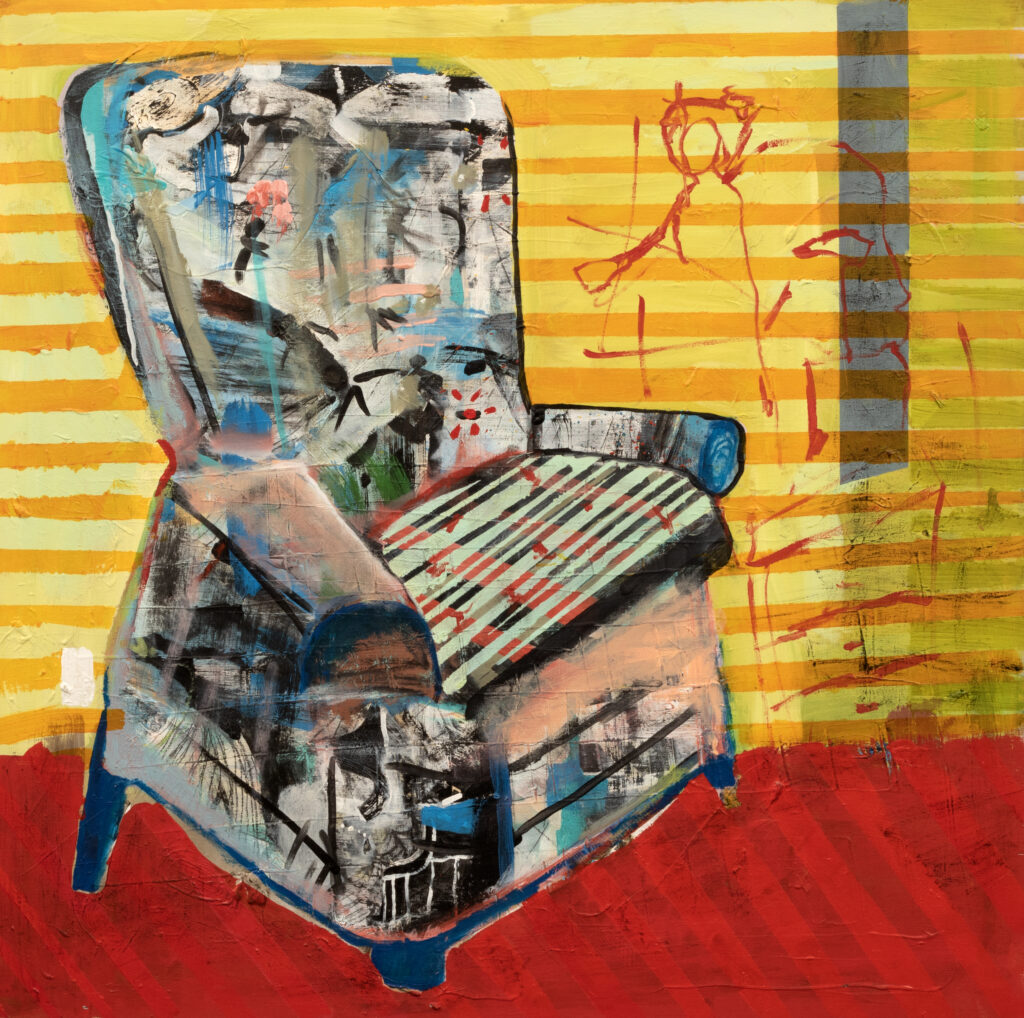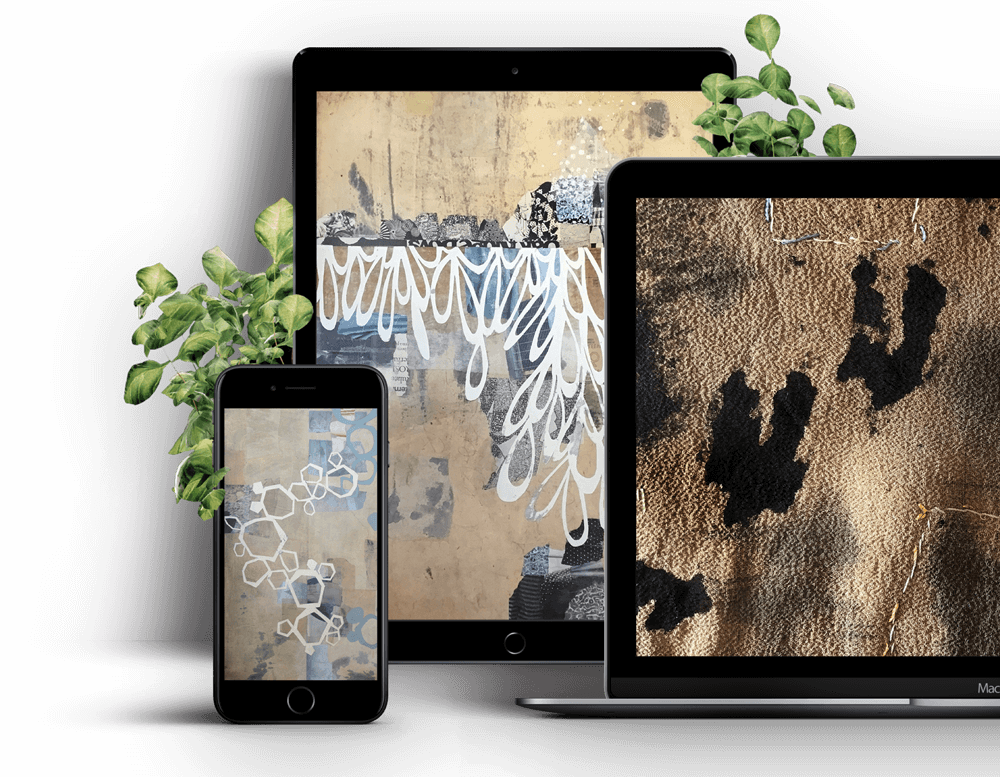Jette Clover
Jette Clover: Covering Quilts
Antwerp-based Jette Clover discovered a love of quilts by accident and made it her career. Fibre Arts Take Two learned more about Jette’s life and career.
Jette’s Friday Feature Artist Interview can be found at the bottom of this page.
Jette Clover
Jette Clover has a rich and diverse creative background, from a career in journalism, and studying art history to landing her dream job as a historian and curator at the Dutch Textile Museum.
Jette pioneered the art quilt movement in Europe through her job at the museum, which combined her love of writing, art, history and textiles by first curating the exhibition about American art quilts in 1991. Six years later, she organised the exhibition of European art quilts. It was a big success, with 49 juried quilts from 11 countries in connection with the opening, yet also organised a two-day symposium that was attended by 31 of the exhibitors, and the beginning of the European art quilt community was laid. Jette has exhibited widely in the USA, Europe, Asia and Australia.
She is also a sought-after teacher for surface design and mixed media workshops. Jette was born and raised in Copenhagen, Denmark, but she’s lived and worked for many years in the USA in the Netherlands. Since 2005. Jette joined Fibre Arts take Two from her newest home in Antwerp, Belgium, to talk about her life in quilts.
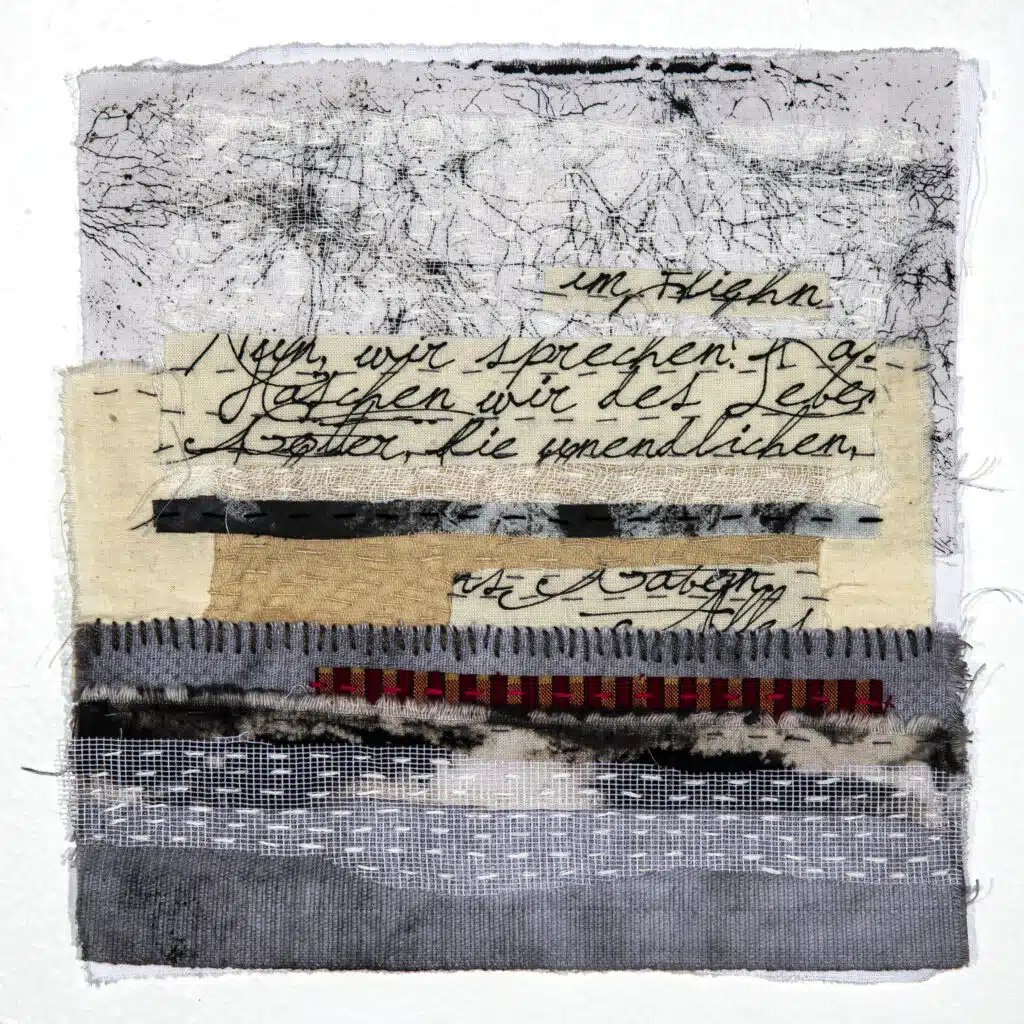
Quilts
Before she discovered quilting, writing was Jette’s art, “As a child,” says Jette, “I was drawing a lot and writing a lot. I didn’t really dare to go to art school, so I became a journalist. Then I started writing a lot about art, so it was almost like a combination.”
Quilts were in Jette’s destiny, “The first time I came to America,” she says, “I saw an Amish quilt hanging on a clothesline at my husband’s hometown in Indiana, and it blew me away because it felt so Scandinavian. The colours were very similar to the colours of Scandinavian, the simplicity of the design was very similar. But that was their culture so I couldn’t do anything with it until we moved to California, and then I just started thinking more about it, not just patterns that you followed.”
In time, Jette found a way to make quilting her own and not feel that she was culturally appropriating, “I think old traditional quilts are beautiful” Jette says, “but it’s not for me. I’m not very precise, and it definitely would not excite me to get it right. I figure if you do it for your pleasure, you should have fun with it, and it should be nice. It shouldn’t be a punishment, or feeling failure, because you can’t be precise about it.”
Ultimately, quilts offered Jette the freedom she was looking for, “Little by little,” she says, “I just thought I’ve got to choose one thing to go into depth with it and the quilts; I can do everything with that I can paint, I can print, I can sculpt with it, we can make it three-dimensional. I can use photography. I can do some writing with it. And I didn’t have to feel I had to give up anything of it.
Space
With her move to Antwerp, Jette found herself without the studio space she was used to, “In the old house, I had a huge studio,” she says, “here, we’ve got a small wooden garden house in the backyard. It’s small, but it smells very nice, and I can open the door when I’m painting, and it’s my little cave.
Jette understands the value of having her own artistic space, “I think that’s very, very important,” she says, “Space and not having to clean up after you. It’s inspirational itself to be surrounded by your books and your work and your materials and to feel at home.”
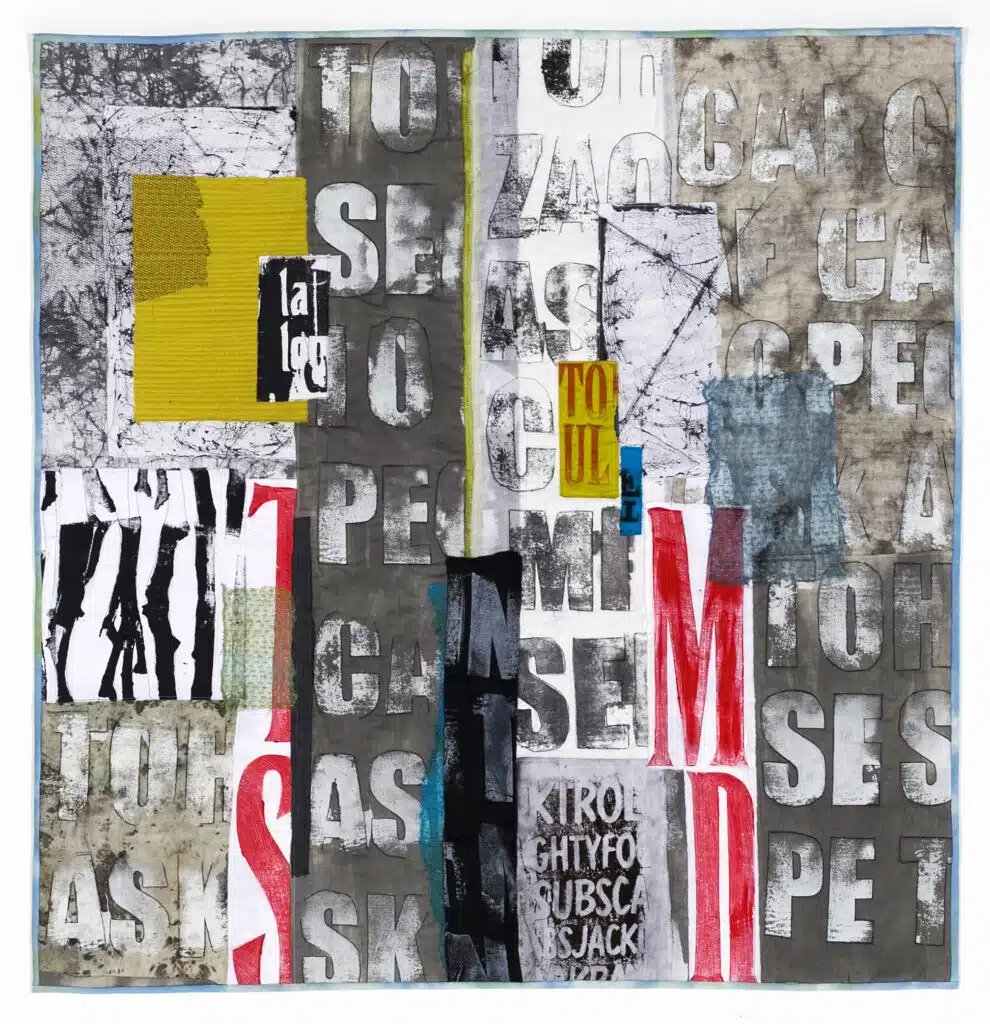
Colours
Jette believes her palette choices come from her Scandanavian roots, “I really like soft colours and neutral colours,” she says, “I don’t really like strong colours, and I don’t have clothes that are really strong colours either, and I’m sure that that’s very influenced by the light in a northern Europe and maybe slightly melancholic. My very important inspirational Painter is a Danish painter, Vilhelm Hammershøi. He paints these interior scenes from his apartment, and they’re just beautiful. It’s all about Southern light, neutral colours, and they’re so serene and quiet, peaceful.”
Fixing the dilemma
Like so many people during the pandemic, Jette had to make changes, “Everything closed,” she says, “there were no exhibitions, there were no workshops. We had just moved here, and I was looking at all my work, all these rolled up pieces, and I was thinking, what’s the point and making more work, you know, just to roll it up and try to find space for it? But at the same time, my fingers were really itching, I wanted to work.”
Jette thought hard to fix this dilemma, “I always worked in small and big series, so I thought, ‘I’m just gonna do small things that I can find spaces to fits the situation now”.
Jette called these pieces Ponderings, “They are 15 by 15 centimetres, something like that, so then one of the things that I saw was, ‘Oh, how small can I make them?”
The result of Jette’s size experiment was Fleeting Thoughts. “They were four centimetres by four,” she says, “That’s a tiny little thing, so then you have to present it somehow. And I put them on stress canvas squares, that canvas. They’re little, and it was interesting, as a challenge to see how small you can make it.”
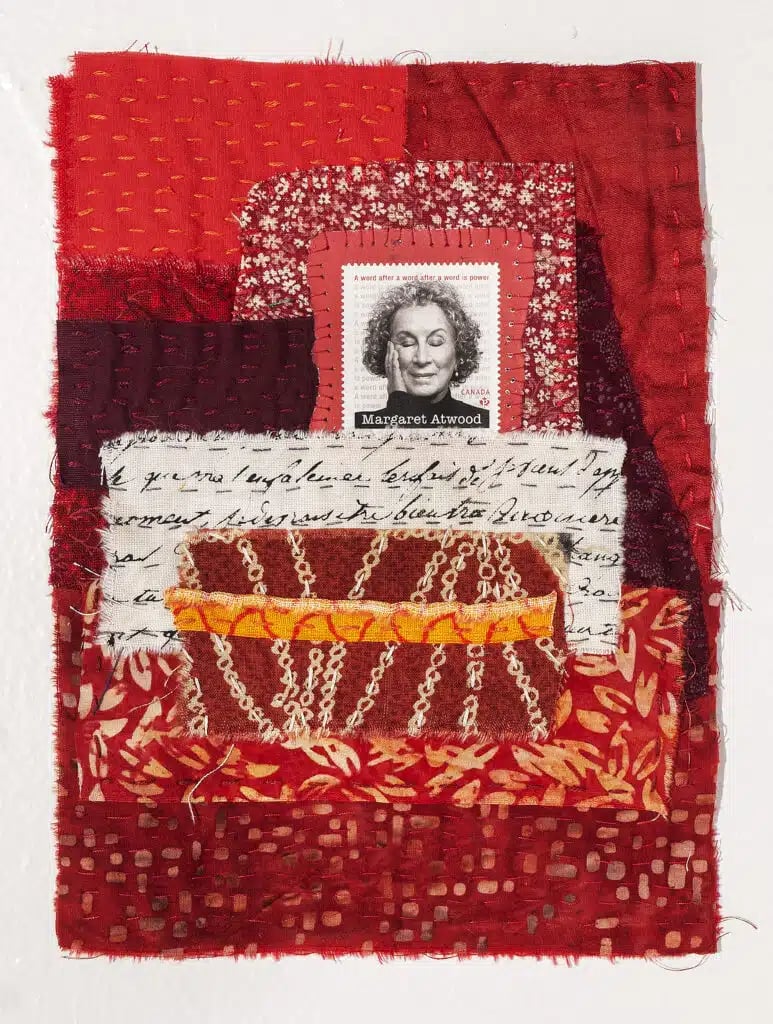
About the artist
Jette was born and raised in Copenhagen, Denmark, but she has lived and worked for many years in the USA and the Netherlands. Since 2005 she has been living in Antwerp, Belgium.
She was a journalist before she became an artist, which explains why text and lettering are almost always present in her work. She is also an art historian and worked for 11 years at the Dutch Textile Museum, curating exhibitions and organizing educational programs. Since 1998 she has worked full-time as a studio artist.
Jette has exhibited widely in the USA, Europe, Asia and Australia and is a sought-after teacher for surface design and mixed media workshops. She has been a member of the European group Quilt Art since 2000, and she was a member of the Art Quilt/New York group for ten years. She is a member of SDA (Surface Design Association) and of SAQA (Studio Art Quilt Association) and has served as its international representative for Europe and Israel for three years.
Notifications
Join Our Newsletter
OUR YOUTUBE CHANNEL
View our interviews and more on our Youtube channel!
OUR FACEBOOK GROUP
Join our Community and stay updated with our upcoming announcements!

.jpg)
-1.jpg)
